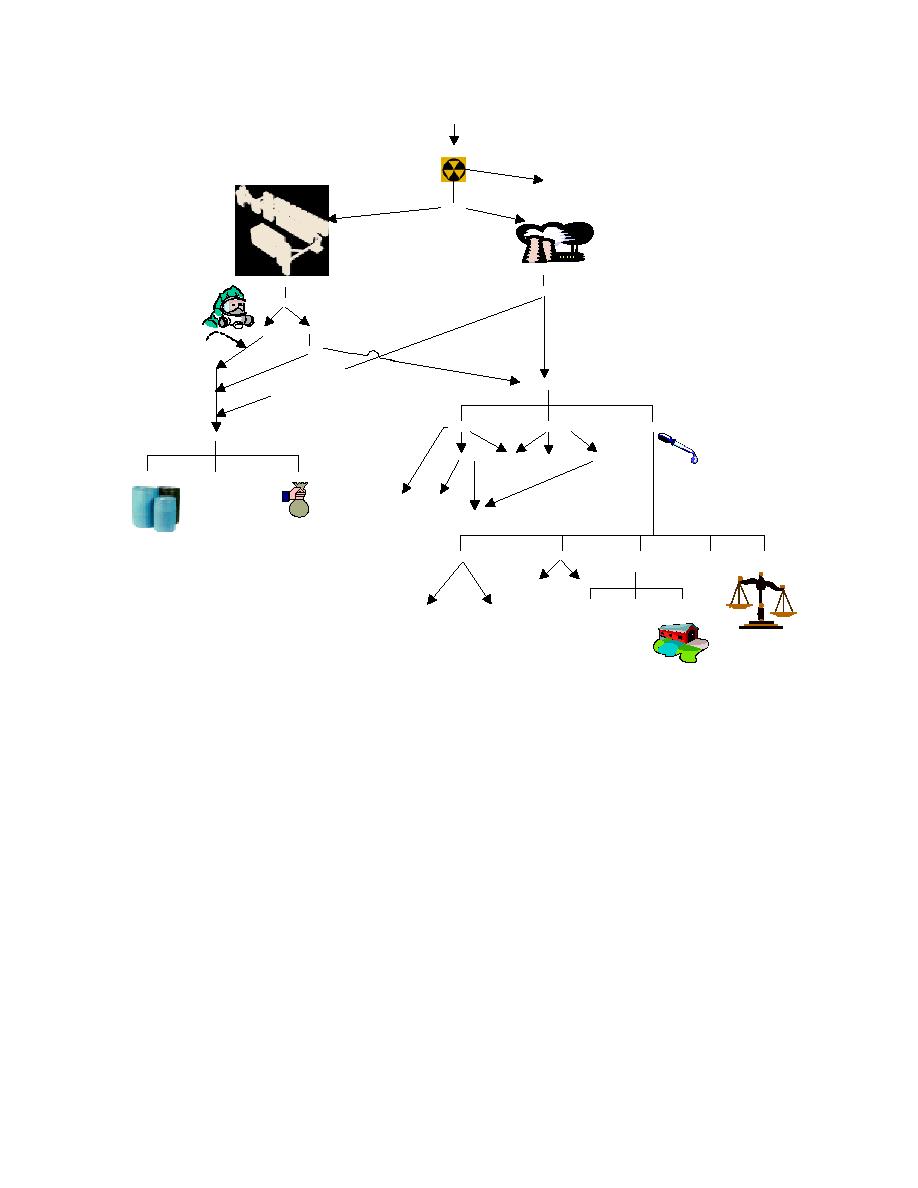 |
|||
|
|
|||
|
Page Title:
Figure 8-1. Ultimate disposition of tritiated material |
|
||
| ||||||||||
|
|  DOE-HDBK-1129-99
Tritiated Material
Radioactive?
No
Yes
Reactor-Produced Tritium
Accelerator-Produced Tritium
Mixed?
Hazardous?
Yes
Yes
No
No
This pathway appears
Mixed
unlikely to exist in
Yes
No
DOE; however, final
Naturally-Occurring and Accelerator-
determinations are
Disposition
Produced Radioactive Material
always subject to
(NARM) mixed with hazardous is
local regulatory
treated the same as radioactive mixed
authority and
with Source, SNM, or a byproduct
interpretation.
Solid
Elemental
Liquid
material, per 5820.2A, even though
Disposition
the Federal Facility Compliance Act of
1992 may not require this treatment.
Recover
Regenerate
Store Stack
Store
Waste
Treatment
Disposal
Waste disposal
Return gas to RTF
Pay others to
take and
process
Liquid release
Vaporize
Pay others
(see Section
Storage
Solidification
to environment
8.2.3)
to take
evaporate stack
Light Water
Heavy Water
Soil
Sanitary
River or
e.g., into cement,
With other
Commercial
column
sewer
stream
clay, LANL
radionuclides
Canadians
nuclear
discharge
torpedoes
power plants
FIGURE 8-1. Ultimate disposition of tritiated material
The reports agree with the fact that burial costs are a function of volume, not concentration.
However, the costs associated with Canadian detritiation services, which are an alternative to
discard via burial, are a function of concentration. The mode of transportation and the number of
packages per shipment are dependent upon concentration, thereby affecting costs. There are
issues associated with paying for foreign disposal of hazardous wastes; however, these issues do
not exist if the foreign (e.g., Canadian) services consist of detritification and return of the other
constituents to the sender or to a U.S. waste processor.
Both reports referenced assign a relatively high value for the recovered tritium based on the cost to
produce tritium in a new production source or the current market price. Although the current
market price established by the Canadians is $3.30 per Ci, it is irrelevant to the value of the
recovered tritium. The Canadian price is arbitrary, and is based on selling only about 100 g/yr,
with its supply of over 2,500 g/yr. For DOE to obtain customers to buy its tritium, it would have to
drop the price substantially, and there is nothing to prevent the Canadians from further
undercutting these lower prices. Likewise, the average cost of tritium in the new production source
is irrelevant. Although the average cost to produce a Ci of tritium in DOE's new production source
will be substantially higher than it was in the past, it is the marginal cost that is germane. The
marginal cost to produce another 100 g/yr given the existence of a new production source is a
small fraction of the average cost with both options (APT and CLWR). [37-38] Although an
97
|
|
Privacy Statement - Press Release - Copyright Information. - Contact Us |